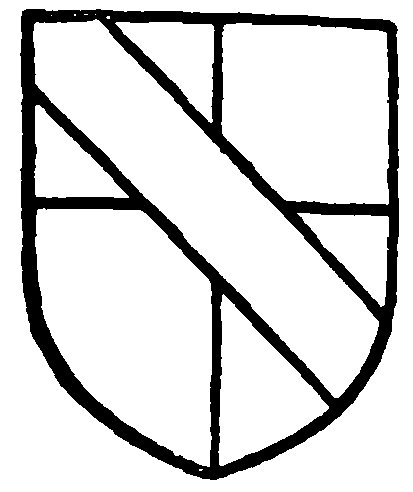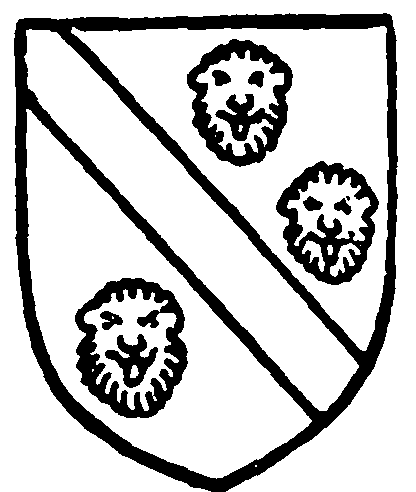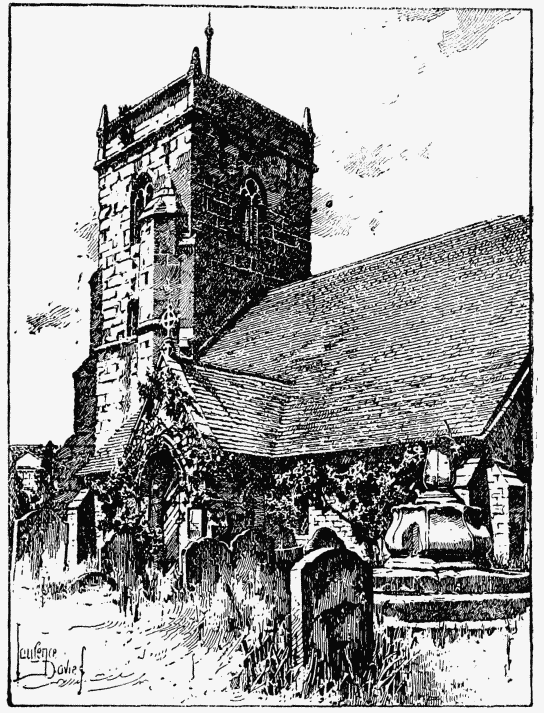A History of the County of Worcester: Volume 4. Originally published by Victoria County History, London, 1924.
This free content was digitised by double rekeying. All rights reserved.
'Parishes: Shelsley Beauchamp', in A History of the County of Worcester: Volume 4, ed. William Page, J W Willis-Bund (London, 1924), British History Online https://prod.british-history.ac.uk/vch/worcs/vol4/pp331-334 [accessed 1 February 2025].
'Parishes: Shelsley Beauchamp', in A History of the County of Worcester: Volume 4. Edited by William Page, J W Willis-Bund (London, 1924), British History Online, accessed February 1, 2025, https://prod.british-history.ac.uk/vch/worcs/vol4/pp331-334.
"Parishes: Shelsley Beauchamp". A History of the County of Worcester: Volume 4. Ed. William Page, J W Willis-Bund (London, 1924), British History Online. Web. 1 February 2025. https://prod.british-history.ac.uk/vch/worcs/vol4/pp331-334.
In this section
SHELSLEY BEAUCHAMP with SHELSLEY KINGS
Caldeslai (xi cent.); Sceldeslega (xii cent.); Sendeslega, Segesleg, Scheldeslye Beucamp, Cheldesleye, Scheldele Beuchamp (xiii cent.); Sheldesleye Beauchaump (xiv cent.); Shellesley Bewchampe or Great Shellesley (xvii cent.).
This parish lies on the left bank of the River Teme, which forms its western boundary. The road from Bromyard to Stourport runs across the north of the parish, which it enters at Stanford Bridge, and from it branch roads run southwards. Shelsley Beauchamp contains two hamlets, Shelsley Kings and Stanford Bridge. Shelsley Kings, which is situated about a mile and a half north of the church, contains several half-timber cottages of the 17th century, and a square 18th-century two-storied brick house. At Stanford Bridge, 3 miles north-east of the church, are several 18th-century brick cottages with tiled roofs, and a 17th-century cottage of half timber. The church is pleasantly situated near the east bank of the Teme, and to the north of it is an old tithe barn. Brockhill Farm, about half a mile north of the church, is a brick house of two stories with an attic, built during the early years of the 18th century, probably on the site of an older building, some of the panelling from which has been re-used. The plan consists of a central block, containing the hall, with projecting wings on either side, the staircase being in the south wing. There is an additional wing on the north, which formerly contained the kitchen, while a modern addition on the south contains the present kitchen offices. The stairway, which has a moulded handrail and slender balusters, dates from the 18th century, and in the hall, as well as in the room over the study on the north side of the hall, are pieces of early 17th-century oak panelling. Immediately to the north of the house, and contemporary with it, is a square brick pigeon-house of two stories, the lower story of which was probably intended for farm purposes, as only the upper one is celled for pigeons. The Manor House is the residence of Mr. Francis S. Winnington. Shelsley Grange in Shelsley Kings is the residence of Agnes, Lady Hughes.
The land slopes from east to west, the ground falling from a height of 700 ft. in the north-east of Shelsley Kings towards the west and south, the land in the Teme valley being liable to floods.
The hamlet of Shelsley Kings has an area of 1,034 acres, the whole parish containing 2,318 acres. A large proportion of the total area is permanent grass. In Shelsley Beauchamp 222 acres are arable land, 751 acres permanent grass and 66 acres woods and plantations; in Shelsley Kings 258 acres are arable land, 769 permanent grass and 55 are woods and plantations. (fn. 1) The soil, which is clay and red marl on a subsoil of Old Red Sandstone, is very fertile, producing crops of wheat, beans and hops. The parish contains several quarries. A lease of a freehold estate at Great Shelsley having a vein of coal running through it was advertised for sale in 1742. (fn. 2)
There is no Inclosure Award for the parish, and three commons still remain: Kingswood in Shelsley Kings, and Ladywood and Southwood commons in Shelsley Beauchamp.
Woodbury Hill Reformatory in this parish was established about the middle of the 19th century by the first Earl of Dudley, (fn. 3) but is now abandoned.
MANOR
In 1086 SHELSLEY BEAUCHAMP was held under Ralph de Toeni by Walter, and had been formerly in the hands of Wulfmar. (fn. 4) The overlordship descended with that of Elmley Lovett (fn. 5) to the Beauchamps, (fn. 6) and the manor was held of the honour of Elmley Castle until 1611, (fn. 7) when the overlordship is mentioned for the last time.
The date at which the Beauchamps of Bedford (fn. 8) first began to hold Shelsley Beauchamp as under-tenants to the Toenis is not known. Simon Beauchamp was evidently in possession in 1194–5 when he was in controversy with the Abbot of Cormeilles as to the advowson of the church. (fn. 9) Simon was succeeded before 1210 by a son William, (fn. 10) who took part with the barons against King John, and lost Bedford Castle and with it the manor of Shelsley Beauchamp, which was granted with the rest of the honour of Bedford in 1216 to Falkes de Breaute. (fn. 11) The honour of Bedford was restored to William Beauchamp in 1224, (fn. 12) and Shelsley probably passed on his death in 1260 (fn. 13) with the barony of Bedford to his eldest son Simon. (fn. 14) Both Simon and his daughter Joan must have died very shortly after this date, (fn. 15) and Shelsley passed to William brother of Simon. William died in 1262, (fn. 16) and in the following year the custody of this manor was granted to Ingram de Fiennes 'for his long service.' (fn. 17) John Beauchamp brother and successor of William (fn. 18) was slain at the battle of Evesham in 1265, (fn. 19) his heirs being his three sisters. Shelsley was assigned to the second, Beatrice wife of Thomas Fitz Otho. (fn. 20) Beatrice survived Thomas, who died about 1273, (fn. 21) and she married as a second husband Sir William de Monchesney, who survived her and held Shelsley Beauchamp until his death in 1286. (fn. 22) He outlived Otho son of Beatrice by her first husband, and the manor passed to Otho's sister Maud wife of John Botetourt. (fn. 23) John Botetourt and Maud sold the manor (fn. 24) and advowson in 1320–1 (fn. 25) to John de Wisham of Woodmanton and Hawise his wife, and John obtained a grant of free warren there in 1328. (fn. 26) Shelsley Beauchamp then shared the history of Churchill in Oswaldslow Hundred, passing from the Wishams to the Croft and Guise families. (fn. 27) John Guise conveyed his moiety of the manor in 1550 to Thomas Nott, Henry Clent and other trustees, (fn. 28) and in 1558 Martin Croft conveyed his share to John and Anselm Nott, William Clent and others, who evidently represented the above trustees. (fn. 29) These conveyances seem to have been made for the purpose of selling the manor (fn. 30) to Thomas Nott, (fn. 31) who is called 'of Shelsley Beauchamp' in the Visitation of 1569. (fn. 32) In 1589 his sons John and Anselm settled the manor on John's son Edward and Penelope wife of the latter in tail-male, with contingent remainders successively to John's other sons Martin, George and Edward. (fn. 33) Edward Nott died in 1608 at Worcester, and was succeeded by his son John. (fn. 34) John sold the capital messuage of Shelsley Beauchamp and the advowson of the church in 1653 to John Travell of London, (fn. 35) of whose grandson Thomas (fn. 36) it was purchased in 1677 by Thomas Foley, (fn. 37) and it descended with Great Witley (fn. 38) (q.v.) until the Foley estates were sold about 1840 to Lord Ward. Shelsley was purchased in 1868 by Joseph Jones, (fn. 39) afterwards of Abberley, and Shelsley has descended with Abberley to the present owner Mr. James Arthur Jones of Ombersley.

Beauchamp of Bedford. Quarterly or and gules a bend sable.

Nott. Azure a bend between three leopards' heads or.
A fulling mill leased for one mark yearly belonged to the manor in 1302. (fn. 40) John Nott held a water-mill in Shelsley Beauchamp in 1613 and 1638. (fn. 41) There is now a mill called Butler's mill on the Teme in Shelsley Kings, but there is no mill at Shelsley Beauchamp. A fishery was mentioned in the Domesday Survey. (fn. 42) Fisheries were held with the manor in the 16th and 17th centuries. (fn. 43)
Shelsley Kings has always been part of the manor of Martley. (fn. 44)
CHURCH
The church of ALL SAINTS consists of a chancel 25 ft. by 18 ft. 1 in., north vestry, nave of three bays 39 ft. 8 in. by 16 ft., north and south aisles 7 ft. 10 in. wide, south porch, and west tower 12 ft. 5 in. by 11 ft. 1 in. These measurements are all internal.
The church was rebuilt in 1846 in the 13thcentury style. The only remaining part of the old church is the tower, which dates from the 14th century. It is built of sandstone ashlar and contains three stories, though divided externally into two stages only. There are diagonal buttresses at the angles, and the walls, which rise from a moulded plinth, are crowned by a plain parapet, with a small pinnacle at each corner. A semi-octagonal stair turret projects on the south face and terminates with a stone roof just above the level of the bell-chamber windows. The tower arch is pointed and of two chamfered orders continued down the jambs without break to the plinths and splayed stops. The west window is of three cinquefoiled lights under a two-centred head filled with vertical tracery. The tracery and mullions are modern. There is a squareheaded light to the intermediate floor on the south side, and on each side of the bell-chamber is a window of two trefoiled lights under a two-centred head; these have been considerably repaired, wood tracery being used in the east window.

Shelsley Beauchamp Church: the West Tower
The bowl of the font is probably of the 13th century; it is of light limestone and circular in form with a plain body slightly diminishing in diameter towards a bead and splay at the foot; the red sandstone octagonal plinth is perhaps later in date. The lower part of a 15th-century rood screen, consisting of six oak traceried panels, has been refixed below the chancel arch. In the intermediate floor of the tower are preserved two heavy oak chests, each of which is carved out of a solid rectangular block and has a heavy cover, also of a single piece of wood, with a curved upper face. They are bound with iron, and one retains the original hinges and has a slot for coins in the cover; both probably date from the 13th century.
The tower contains a ring of six bells, by John Rudhall, 1790, and a small call bell, without inscription, in the east window.
The plate consists of a silver chalice and cover paten of 1570 and a silver flagon of 1634 engraved with the arms of Jeffreys, and having an inscription to the effect that it was given in 1635 by Frances Jeffreys, daughter of William Jeffreys of 'Hame Castle.'
The registers before 1812 are as follows: (i) all entries 1538 to 1774; (ii) all entries 1775 to 1812. There are two interesting entries in the first book, one recording a collection made in the parish of £1 8s. 9d., and paid to the Bishop of Worcester on 22 April 1671, 'for the redemption of English captives out of Turkish slavery,' and another a collection of 11s. 5d. made on 21 October 1678 for the rebuilding of St. Paul's Cathedral, London.
In the churchyard, to the south of the church, are the remains of a churchyard cross set upon three octagonal steps much weathered and decayed. The base of the cross is also octagonal and has mouldings of renaissance type, a stone sundial being inserted in the socket; these alterations are probably the work of the late 16th century.
ADVOWSON
The advowson of Shelsley Beauchamp is mentioned for the first time in 1194, when Simon Beauchamp was engaged in a suit against the Abbot of Cormeilles concerning it. (fn. 45) The abbot may have claimed it as chapelry of his church at Martley, to which a pension of 13s. 4d. was paid by the incumbent of Shelsley until the Dissolution. (fn. 46) Simon was apparently successful, for the advowson from that time followed the descent (fn. 47) of the manor (fn. 48) until the Foleys parted with the latter in the first half of the 19th century. The advowson was purchased in 1842 (fn. 49) by Lord Ward, and now belongs to William Humble, Earl of Dudley, twelfth Lord Ward.
A composition was made on 14 September 1420 between the rectors of Martley and Shelsley Beauchamp as to tithe in the hamlet of Shelsley Kings and the burials of persons dying in Shelsley Kings and Shelsley Beauchamp, by which it was agreed that the rector of Martley should have two sheaves of all tithes in the hamlet and the rector of Shelsley Beauchamp the third sheaf, and that all persons dying in Shelsley Beauchamp and Shelsley Kings should be buried in Shelsley Beauchamp graveyard; the mortuaries were to belong to the rector of Martley and oblations to the rector of Shelsley Beauchamp. (fn. 50)
CHARITIES
The Free School was founded by the will of the Rev. Owen Plevy, a former rector, dated in 1681, and further endowed by wills of Caleb Avenant and Margaret Crowther, 1716. (fn. 51)
In 1707 the Rev. Thomas Webb, as appeared from the church table, gave 10s. a year for ever for the buying of Bibles for poor children of the parish.
The same Thomas Webb, by his will dated in 1703, and by a codicil thereto dated in 1704, devised an estate in the parish of Abberley for apprenticing donor's relations or others of this parish. The endowment consists of a farm known as the Lower Hay Oak Farm at Abberley, containing 75 acres or thereabouts, let at £62 10s. a year. The administration of the charity is regulated by a scheme of the Charity Commissioners of 17 November 1876, as varied by a scheme of 3 April 1900. £5 a year is expended in books, and the trustees are empowered to select and train children as pupil teachers.
In 1774 Samuel Parkes by his will left £25, the interest thereof always to buy for two poor men, or two poor women, coats or gowns, upon All Saints' Day every year. The trust fund now consists of £25 16s. 10d. consols, producing 12s. 8d. yearly.
In 1784 John Pershouse, by his will proved in the P.C.C. 28 February, bequeathed £100, now represented by £103 7s. 2d. consols, the annual dividends, amounting to £2 11s. 8d., to be distributed amongst the poor at Christmas.
In 1886 Miss Marianne Hill, by her will proved at London 22 June, bequeathed £200, now invested in £200 5s. consols, the dividends, amounting to £5, to be applied in providing warm garments for six poor people on St. Thomas's Day, and, if any overplus, in coals or blankets, &c.
In 1896 Miss Mary Harris, by her will proved at London 17 August, bequeathed £92 5s. 3d. consols, the annual dividends, amounting to £2 5s., to be applied in the distribution of Bibles, blankets, or warm clothing for the poor.
In 1908 William Hyde Cooke, by his will proved 4 November, bequeathed £200, the interest to be applied in keeping in repair certain monuments in the church and in distribution of coal to the poor. The legacy, less duty, was invested in £217 10s. 5d. consols, producing £5 8s. 8d. yearly.
The same testator bequeathed £300 for promoting the objects of and to strengthen the work of the Women's Clothing Club instituted by the testator's sister, the late Miss Mary Cooke. The legacy, less duty, was invested in £326 5s. 8d. consols, producing £8 3s. yearly.
The several sums of stock are held by the official trustees.
